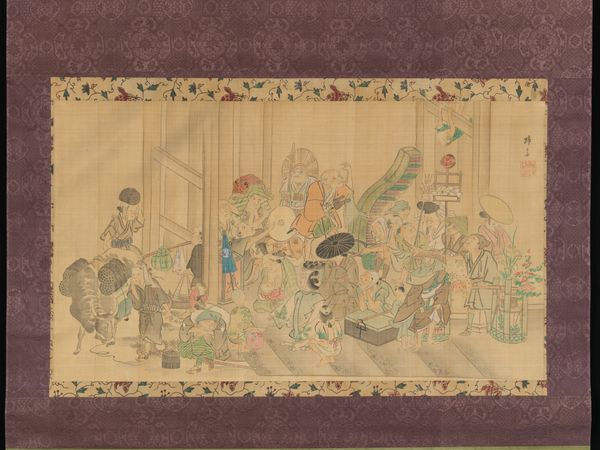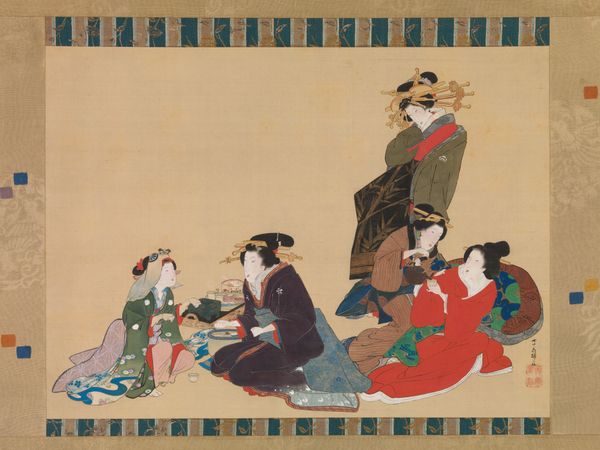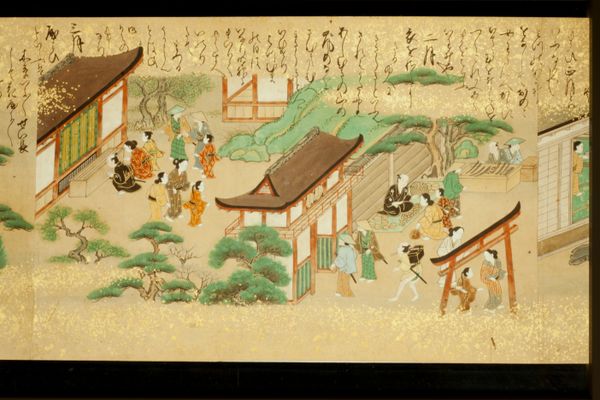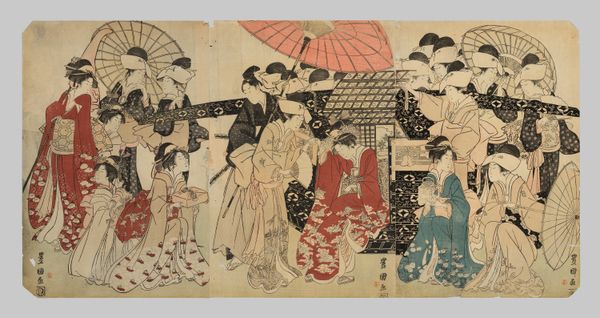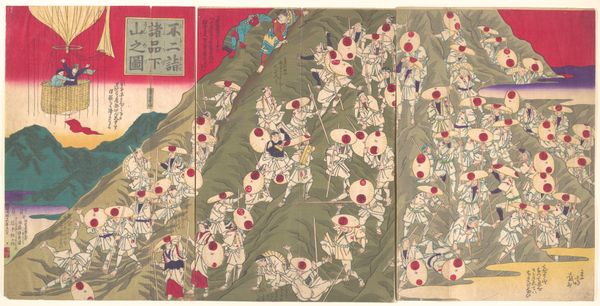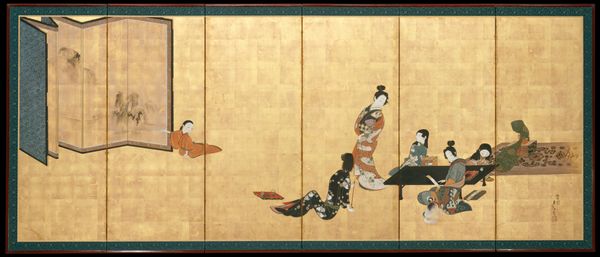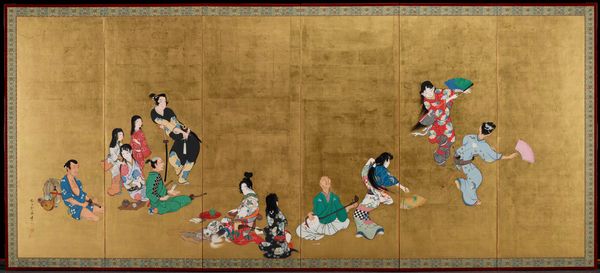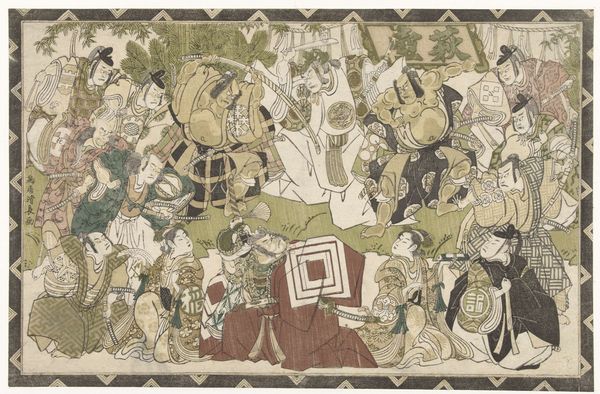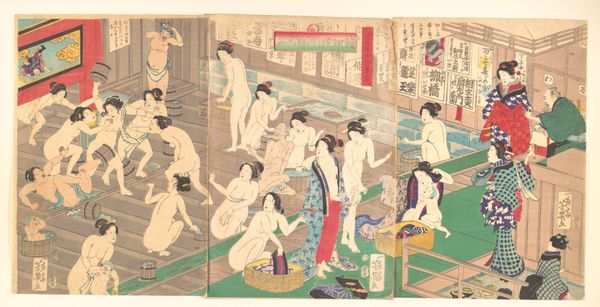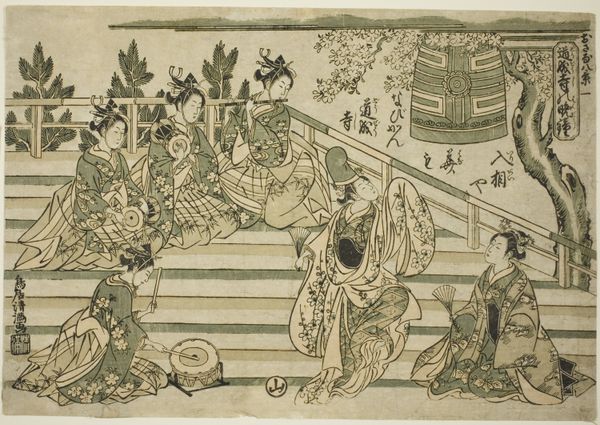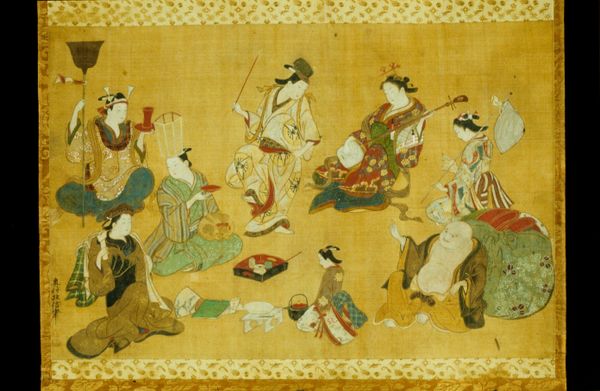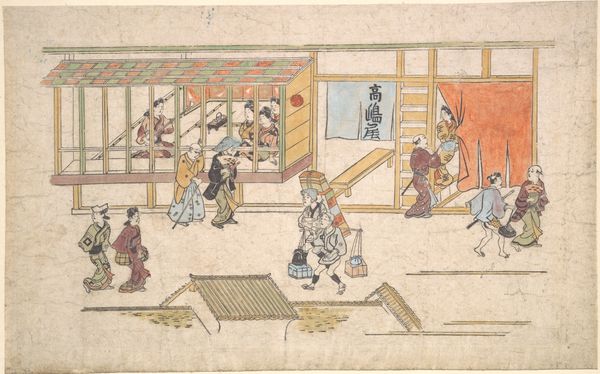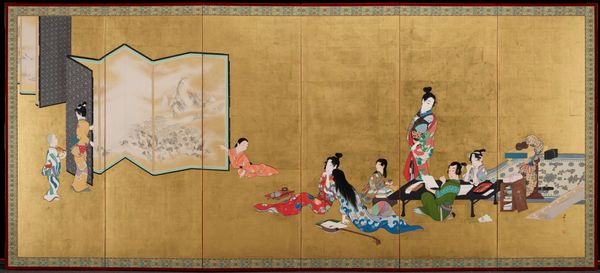
Pleasures of the Twelve Months late 17th - early 18th century
0:00
0:00
#
water colours
#
muted colour palette
#
japan
#
handmade artwork painting
#
showhome propping
#
painting painterly
#
watercolour bleed
#
watercolour illustration
#
mixed media
#
watercolor
#
warm toned green
Dimensions: 12 13/16 x 348 7/16 in. (32.5 x 885 cm) (mount)
Copyright: Public Domain
Curator: We're looking at "Pleasures of the Twelve Months," a watercolor and mixed media work attributed to Sumiyoshi Gukei, likely from the late 17th or early 18th century. It is currently housed here at the Minneapolis Institute of Art. Editor: What a delightful scene! It's giving me major Wes Anderson vibes, if Wes Anderson had grown up in Edo-period Japan. So orderly, yet bursting with life and tiny dramas. Curator: Indeed. This piece gives us insight into the aristocratic entertainment of the time. Notice how Gukei meticulously depicts each figure and architectural element. The attention to detail suggests the artist was likely commissioned to record a specific event or series of celebrations. Editor: It's funny, I'm less drawn to the accuracy and more to the overall festive feeling. Like eavesdropping on a really elaborate party through a keyhole. The watercolor bleed almost gives it the feel of a hazy dream. Curator: It is a masterful depiction of leisure, certainly. However, the clothing, the activities – the tea ceremonies, dance performances – these were highly codified performances that reinforced social hierarchies. Art played a huge part in communicating and solidifying power back then. Editor: Of course, always power structures lurking beneath the beauty, aren't they? But still, there is a joy here, isn’t it? They look as if they were having a great time and didn't even know they were upholding the status quo. Maybe that’s just me being hopelessly romantic. Curator: No, I see it, too. Art is never just propaganda, never just an instrument of power. There is often something that slips through the cracks of officialdom, a residue of pure human expression. I find the artist's effort to showcase different architectural settings across what appears to be a sprawling compound extremely interesting. I can almost see this translated into different real locations around Kyoto and Osaka. Editor: I feel I’m there. Thinking about how someone poured all that time and energy, mixing colours to depict the pleasures, well, it does feel moving in a simple, beautiful way. Curator: Ultimately, art helps us comprehend history and humanity. Works like these offer complex portraits of past lives.
Comments
No comments
Be the first to comment and join the conversation on the ultimate creative platform.
